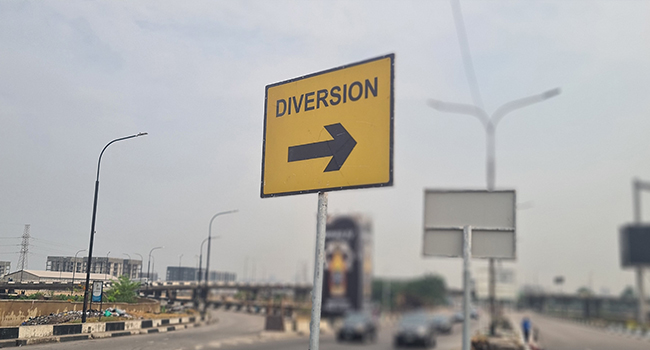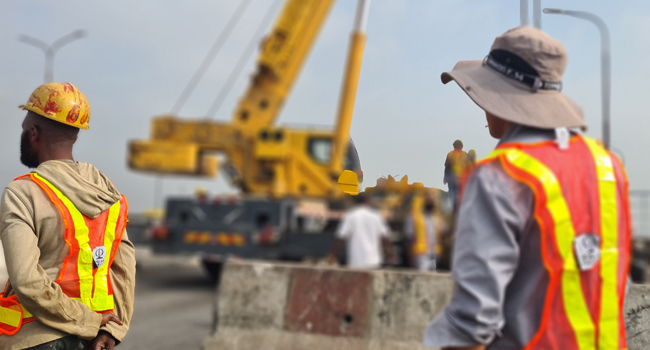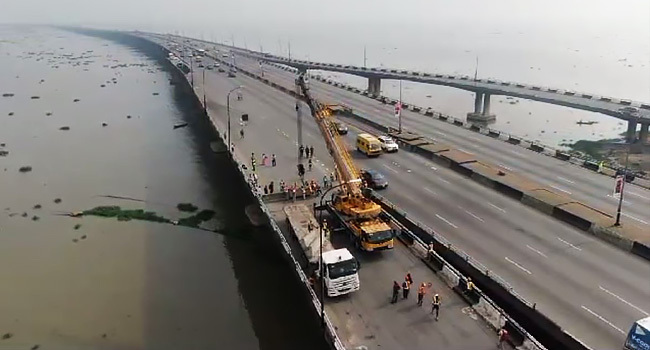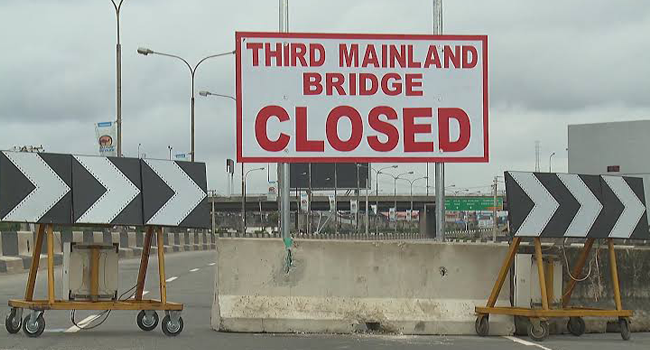
By Dare Idowu
With an estimated 20 million people, Lagos is Africa’s most populous city with the highest population density in Nigeria.
The state’s population size comes at a price – clogged roads, exacerbated by insufficient and, in several areas, decrepit transport infrastructure.
Now, the daily commuting experience of many Lagos residents is about to become harsher after the Federal Ministry of Works and Housing announced plans to close the Third Mainland Bridge for rehabilitation starting, from July 24 to January 24.
The closure, according to the ministry’s front-man in Lagos, Olukayode Popoola, is long overdue, for a contract awarded since 2018.
With the budget sum of N18.875bn, the rehabilitation work is expected to run for 27 months and will be carried out by Borini Prono, one of the consortia of companies that built the bridge in the 1980s.
The replacements of the worn-out bearings and bad expansion joints are scheduled for the six months; this warranted the partial closure of the bridge.
The general maintenance of the entire 177 piles that form the foundation of the bridge, a major part of the rehabilitation work, is also expected to be carried out, but this is an underwater work and has nothing to do with the bridge’s closure.
In August 2018, the Third Mainland Bridge was shut for a three-day investigative maintenance; an underwater confirmatory test was also carried out in March 2019. Also in 2019, a viral video indicating an unusual vibration of the bridge raised concerns over the bridge’s safety, but the federal government dispelled the rumours insisting the bridge was structurally fit and poses no danger to users. Meanwhile, further investigation revealed that the worn-out expansion joints of the cantilever bridge may not be posing an immediate threat to the structure at the time, but consistent use without carrying out the required maintenance work has left the bridge in bad shape.
Averting major danger
The Lagos state government says it has a record of 60,000 trips going from the Mainland to the Island daily. Coupled with the city’s traffic problems, it is almost impossible for the government or its contractors to find a perfect time for rehabilitation work on the bridge.
John has been on the road for four hours; he’s trying to connect the usable part of the Eko Bridge through the National Theatre entry point. John throws out his head intermittently to check what could be the cause of the traffic but all he could see from a short distance are a long queue of heavy-duty vehicles.

“There is traffic everywhere now, as you can see, but shutting down the Third Mainland Bridge . . . I don’t know what is going to happen but people are going to suffer,” he said.
John, like many other drivers, spends valuable time in traffic, enduring the pollution and other heavy burdens posed by the gridlock.
Still, the federal government is emphasising the need for the repair work to commence as scheduled, as no burden would be heavier than the loss of life.
“The test was carried out in 2019. We have analysed the results; now we want to replace it, so it’s not as if we intentionally want to close all the bridges, but because we just have to work on it to prevent calamity,” Popoola said.
Mr. Popoola also ruled out the possibility of an extension in the project deadline. He said carrying out this construction work during the rainy season is not a problem; in this case, changing bearings and expansion joints are different from asphalt work which is usually disrupted by the rains.
Traffic management plans
The Lagos state government has been working closely with the Federal Government especially in providing a traffic management plan.
The diversion will see gridlock spilling over to some other major and inner roads in the state.
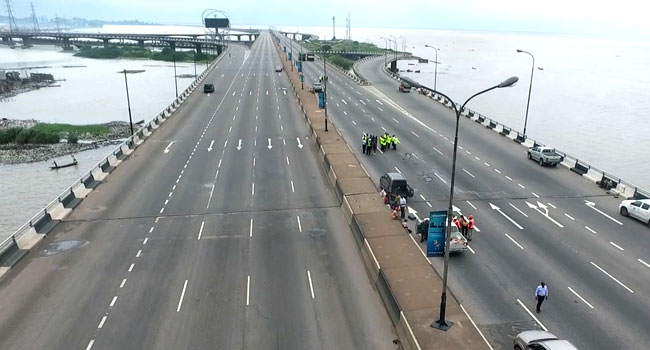
The Lagos State Traffic Management Authority (LASTMA) will work with the Federal Road Safety Corps (FRSC) to help motorists have a semblance of a smooth journey throughout the construction period.
In the mornings – from 12:00am to 1:00pm – a section of the road will be open from commuters coming in from Oworonshoki to the Island; those coming in from the Island to Oworoshonki, at that time, are expected to use alternative routes. The direction swings from 1:00pm to 12:00am, as commuters coming in from the Island to Oworonshoki are allowed to use a section of the bridge while those coming from the Mainland are to use alternative routes.
According to Lagos State Governor, Babajide Sanwo-Olu, the bridge’s traffic will only be disrupted by 25 percent.
Authorities say alternative routes have been improved to sustain the expected increase of diverted traffic. But, with Eko Bridge also partially shut, Carter Bridge is set to be the main conduit linking the Mainland to the Island.
Limited options
The Third Mainland Bridge earned its name from being the third of bridges linking the largely suburban Mainland to the relatively upscale Lagos Island. The Carter Bridge and the Eko Bridge (formerly called the Second Mainland Bridge) linked both Lagoses before the 11.8 km bridge was completed in 1990.
Expectedly, Eko and Carter bridge should be the alternative routes for the period when the work begins on the Third Mainland Bridge. But Eko Bridge is also not in good shape. The Ministry of Works and Housing said the bridge had to be closed after a serious failure on the deck was noticed. The bridge was not initially part of the project to be executed this year but the deteriorating state is definitely what cannot be overlooked.
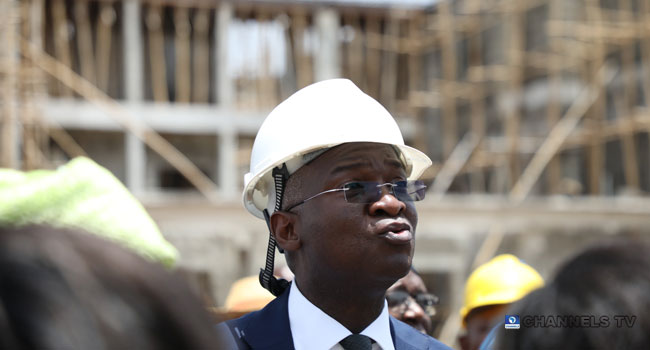
Rehabilitation work is ongoing at a section of the Eko Bridge. Worn-out bearings noticed between Alaka and Costain portion inwards Apongbon are being worked on. When the bridge was shut in March, authorities advised commuters from Agege Motor Road or Ikorodu Road to drive through Jibowu to connect Herbert Macaulay Way to Adekunle and Third Mainland Bridge towards Lagos Island or other destinations. Now, with the Third Mainland Bridge joining the league of shut bridges, the options have become slimmer.
Motorists are not the only ones facing the dearth of options. The Minister of Works and Housing, Babatunde Fashola, believes the government, too, has run out.
“Let me say that with every sense of duty and responsibility, that safety and our ultimate common convenience underpin this decision, and if there was another way to do this, we would have taken that way but regrettably as you have heard, there’s really no other way,” The Minister said.
Meanwhile, the volatility of Lagos roads cannot solely be blamed on the mega potholes which have now been expanded by the rains; it only takes one or two broken-down trucks at a focal point for the whole city centre to be on go-slow mode – a nightmare motorists confront frequently.
So, almost unarguably, for the next six months, commuters, especially those trying to connect both ‘Lagoses’, should be ready to dig in for that extra perseverance.



